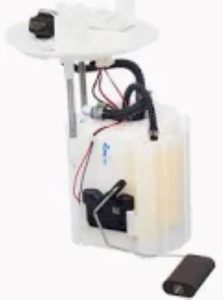To start fuel pump pressure checking, first of all, prepare the tools: a fuel pressure gauge, a service manual for your vehicle, and safety gear such as gloves and goggles. Usually, fuel pressure gauges measure in pounds per square inch, with most standard fuel pumps operating in a pressure range between 40 to 60 psi. Applications requiring high performance necessitate higher pressures than these limits, at times exceeding 70 psi.
Next, locate the test port for fuel pressure, which is typically on the fuel rail. It resembles a tire valve in appearance and serves as an access point for the pressure gauge. Connect the gauge after having first turned off the vehicle to relieve fuel system pressure. This can be done by pulling out the fuel pump fuse or relay, then letting the engine run until it stalls. This will minimize fuel spray when the gauge is connected.

Once the pressure has been relieved, connect the fuel pressure gauge to the test port. Ensure that all the connections are snug to avoid any leaks. After connecting the gauge, replace the fuel pump fuse or relay and start up the engine. Take a reading on the gauge, and it shall stabilize within the given pressure range by manufacturer's specifications. Conversely, if the pressure is too low, normally lower than 40 psi, that would mean something has probably gone wrong with either a failing fuel pump, a clogged filter, or it has a bad pressure regulator. Conversely, if the pressure goes overboard and rises above the recommended levels, it will indicate a bad pressure regulator.
In order for results to be more accurate, pressurize the system under power loads, such as during acceleration. This will simulate real operating conditions and give you a better picture of what is happening. Carefully disconnect the gauge at the end of your test and replace any removed components.
How is fuel pump pressure tested? He should utilize a fuel pressure gauge connected to the fuel rail, relieve the pressure before connecting the gauge, and note the reading for whether or not the pump operates within the correct psi range.